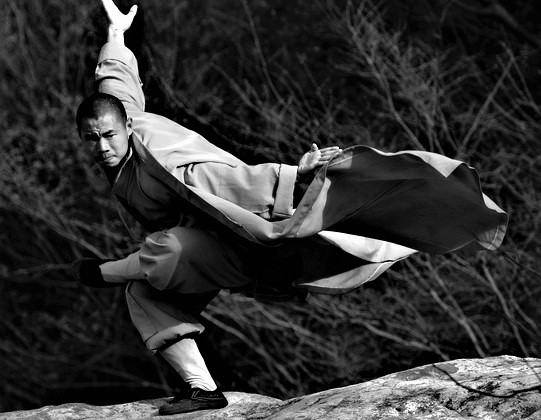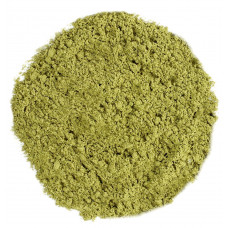Shopping Cart
0 item(s) - $0.00Jin Gu Jia | Golden Relic Flexibility Formula | Herb Kit | 今古家

This powerful herbal prescription is made from “High Grade Chinese Herbs” and is sold in 2 different forms of use (in dried herb kit or in powdered herb kit). Choose from—a smaller herb kit (which contains approx. 150 grams and should last about 15 days) or a larger herb kit which makes a 60-day supply (and contains approx. 600 gram herb kit). Be sure to select how you want your order filled either in dried herb kit, or powdered herb kit by using the above “description” and/or “add on” buttons.
- How to use? The traditional Chinese form of preparation for this formula is the prepare a medicinal wine (yao jiu) which should be aged for a minimum of 90 days; although, when powdered it can effectively be used to make pills, capsules, or simply add the powder to juice or a smoothie and drink like you would a power-shake.
- What’s the cost? the cost for a 15-day herb kit is $69.99, or a 60-day herb kit is $139.98 ($69.99 + $69.99). Please use the above “add-on” and/or “description” buttons to make your choice.
今古家
An ounce of prevention is worth a pound of cure… Although I wasn’t entirely convinced that the precautionary warnings about the perils of martial arts training were not overexaggerated when I first began training, it only took a few injuries to convince me that due to the physical demands required to practice on advanced levels, predictions about the likelihood that pain and injuries would be part of my future were not entirely without merit. The good news is that over the years I’ve learned that although an occasional injury is inevitable a large percentage of the injuries suffered by martial artists, especially injuries involving the sinews (ligaments and tendons) are often preventable. Like the other so-called “blood sports,” the inherent risk of injuries from sparring and the physical demands of daily training make an occasional injury an unavoidable consequence that is more or less considered an acceptable part of the journey in an effort to master our art. Be that as it may, the number of injuries and the training time that’s lost during recovery can be dramatically reduced by doing three things: 1) adequately warming up before stretching, 2) devoting a proportionate amount of time to stretching compared to the amount of time spent performing kata, practicing combat techniques, and sparring, 3) making regular massage a part of your training regimen. Stretching, which stimulates the production of synovial fluid and lubricate the joints, increases the body’s flexibility which is a major factor in the successful performance of a wide range of disciplines from archery, to ballet, to martial arts. Unlike students of the other disciplines, far too few martial arts practitioners truly recognize the benefits of stretching. Most marginalize its importance and pay a disproportionate amount of attention to strength training, cardio-vascular fitness, and perfecting combat skills. In both classical dance as well as the martial arts our bodies are our instruments and a common goal of both disciplines should be the development of optimal flexibility. In the art of dance and likewise in the art of war the practitioner is encouraged to become as limber as he/she is capable of in order to improve the performance of their art, and reduce the risk of injury. Practitioners of Chinese martial arts have always recognized the importance of making their bodies subtle and flexible in order to become proficient in kung fu and minimize the strains, sprains, and contusions that are an inherent part of training. A key component of their injury avoidance strategy is the attention that is given to attaining maximum flexibility by following a well-designed systematic stretching regimen.
According to traditional guidelines beginners and mid-level martial artists are advised to stretch a minimum once a day, three to five days per week to maintain flexibility. Higher level dedicated practitioners have been known to stretch as much as two to three times per day six or seven days a week. I have found one particular herbal prescription (the legendary Taoist formula) Jin Gu Jia Wan that can be used to provide herbal support that enhances the effectiveness of the stretching regimen and further improves flexibility by increasing synovial fluid, improving circulation, and strengthening the joints. To insure that optimal results are obtained there is one important point that needs to be emphasized. According to some of the most highly respected athletic trainers and martial arts instructors the idea that stretching is part of the warm-up is patently incorrect. According to these experts the warm up and stretching are two entirely separate events! If the experts are to be believed two common errors in the training regimen of many martial artists is the minimal amount of time that is devoted to stretching, and an unwillingness to postpone stretching until the body is sufficiently warm. There is unanimous agreement among these fitness gurus that stretching should always be preceded by a warm up in order to elevate the body temperature and improve connective tissue and muscle extension by increasing the circulation of blood and chi. When proper attention is given to this seemingly minor detail not only will it decrease the severity of an injury if one occurs, more significantly it can reduce injuries by as much as 60-70%.
- How to best use this formula? Traditional Chinese medicine recommends preparing this herbal formula into a medicinal wine (Yao Jiu), which must age for a minimum of 90-days to allow the herbal properties to be properly extracted. Daily dosage would be to drink one 50ml shot glass full, and treatment is recommend for a minimum of 90 days or as long as necessary for optimum energy enhancement. Once prepared the Yao jiu can be safely stored for many years; as a matter of fact, the longer it continues to age the more powerful its abilities will become.
- Not interested in making a wine? For those who don't have the time to wait for a Yao jiu to age or prefer not to drink alcohol; we will powder the herbal formula and the powder can be added to capsules, or a smoothie or juice and drunk that way. Daily dosage (for capsules) is 3 caps 3 x daily, when adding the powder to juice/smoothie, mix one heaping teaspoon into 8 ounces of juice/smoothie and drink that 1-2 x daily. However, we would be remiss if we did not state that although it is effective when used this way, a medicinal wine makes a more potent brew whose effects are more powerful. Whether you decide to prepare the traditional medicinal wine or use the powdered herb in capsules or a smoothie, we will provide easy-to-understand processing instructions.
Long term use is highly recommended.
Write a review
Your Name:Your Review: Note: HTML is not translated!
Rating: Bad Good
Enter the code in the box below:

All Rights Reserved | © Sea of Chi 2025 | Web Design Company - DreamCo Design
The statements made have not been evaluated by FDA. Our products are not intended to diagnose, treat, cure or prevent any disease.





